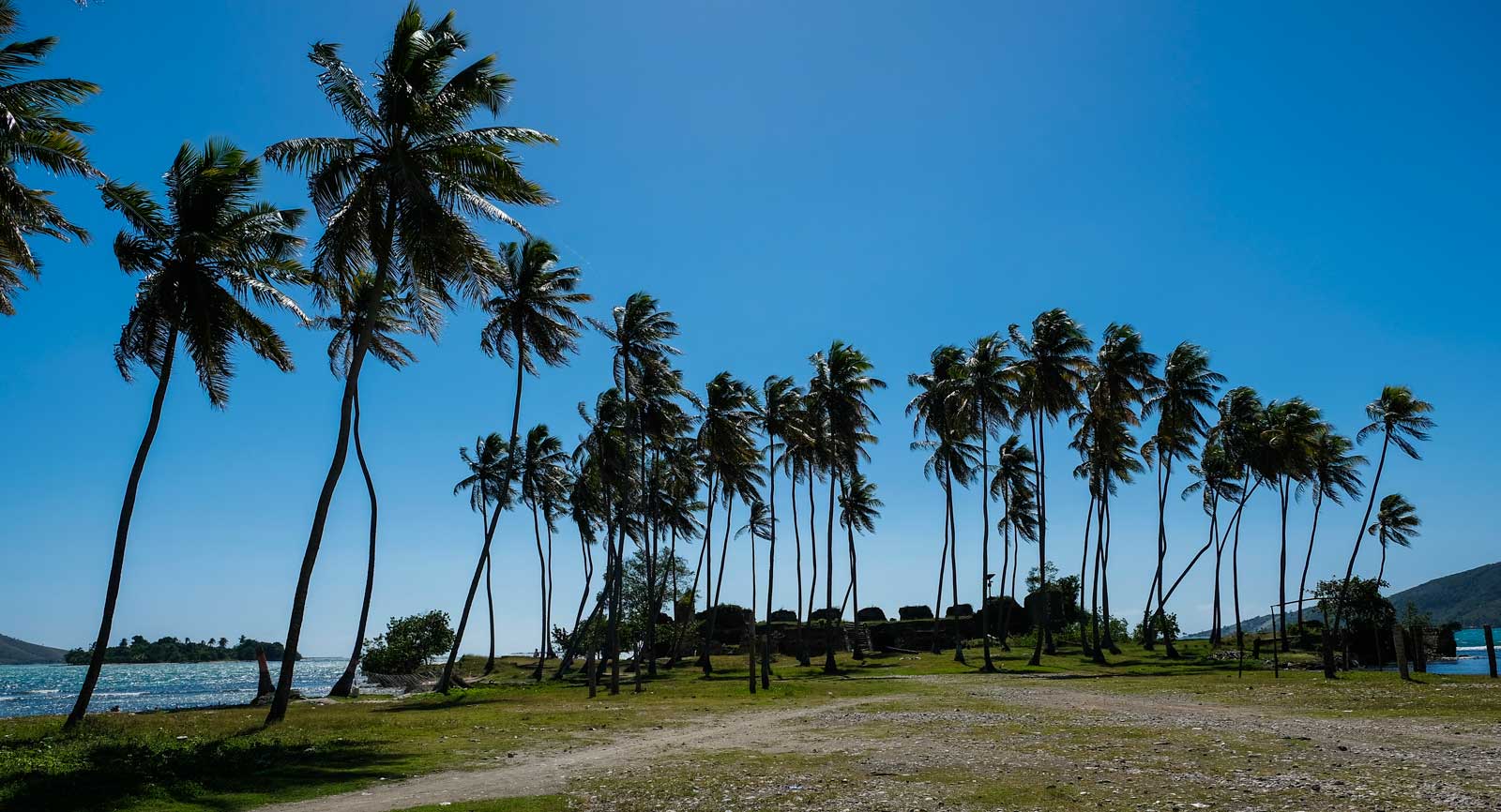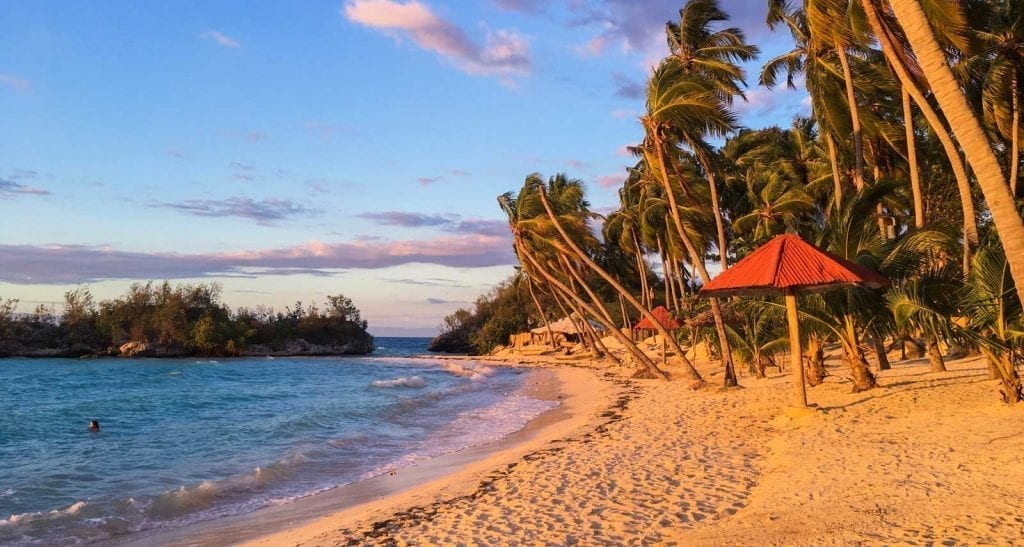Things to do
Explore ruins at Fort des Oliviers
Fort des Oliviers
Photo: Mikkel Ulriksen
The gorgeous bay of Saint Louis is home to one of the most famous relics of Haiti’s colonial past.
Share
A glimpse of the past
As you walk past cannons propped on stones, your mind will wander back to the time of double-breasted military uniforms and rifles. Staircases ascend and descend to the upper and interior levels of the fort – or the parts of it that have been preserved despite the elements. Wandering up the stairs, under archways and around the ancient artillery allows you to glimpse the experience of construction workers - both French and Haitian, who - more than three hundred years ago - put each of these stones into place.
Exploring the ruins of Fort des Oliviers, visitors can get a sense for the colonial era in which it was built. Three centuries have suffused the weathered walls of the fort with character. The stone has been softened and polished by the salt air and waves. Fort des Oliviers is as much a product of the coastal landscape as it is of those who built it.
If you are looking to deepen your understanding of Haiti’s colonial history, a visit to Fort des Oliviers is absolutely in order!

Fort des Oliviers
Photo: Franck Fontain
Steeped in history
Built in 1702, Fort des Oliviers was built by French occupiers to defend the Haitian territory against their colonial competitors - namely the British Empire. Unfortunately for the French, the British did indeed take over Fort des Oliviers about fifty years later, and established it as a pit-stop port for British ships to rest and refuel their crews.
The southern coastline of Haiti was hotly contested in the seventeenth and eighteenth centuries as a foothold from which to defend the country’s riches. Although modern Haiti is known for its pristine beaches, colonial-era Haiti made a name for itself in European cities through the high-quality goods brought back by traders returning from its shores. Fort des Oliviers was built just a few years after the French and Spanish divided up the island of Hispaniola into two separate countries - Dominica on the East and Haiti on the West.
The living heritage of relics like Fort des Oliviers make it impossible to separate the insistent natural beauty of the landscape from the history that has shaped modern Haiti as a living, breathing organism. This sense of identity and purpose is what drives the carnival attitude and lust for life that sets Haiti apart as one of the best places to visit in the Caribbean.
If you're thirsty for more adventure, you'll find another old fortress on an islet in the bay visible from Fort des Oliviers. This is Fort Saint-Louis, constructed at the same time as Fort des Oliviers. The islet is also home to an abandoned shipwreck famous among locals.
Fort Saint-Louis is accessible via a short boat ride from the coast.
Getting there
Fort des Oliviers is a short walk from the township of Saint-Louis-du-Sud. While you’re in town, get directions to the highway side market and sample some of the famous street food. If you only try one thing, look for the lady selling Lam Veritab Fri (fried breadfruit). Although on the plate fried breadfruit looks a lot like fried plantain, you’ll notice the texture is very different. A starchy relative of the jackfruit, breadfruit is delicious, and this lady makes some of the best in all Haiti. Best served piled high with a serving of spicy pikliz.
From the western edge of town, you can walk along the waterline, and over the palm-shaded peninsula that leads to the fort. The upper level features areas that are open and level enough to sit and enjoy a picnic and a peaceful moment spent disconnecting from city life. A stone’s throw away is a beach for you to sit back, relax and dip your toes in the bay of Saint of Louis.
You’ll find local tour guides happy to lead you through Fort des Oliviers – for a small fee. Getting a fuller understanding of the reasons why Haiti’s southern coast was often caught in a tug-of-war is one of the best ways to sharpen your appreciation of all the things the island has to offer.
Find Fort des Oliviers
External Links
Categories
Tags
Share
Find Fort des Oliviers
External Links
Categories
Tags
Share
The best Haitian getaways for a long weekend
Beach at Port Salut
Photo: Verdy Verna
Explore more of Haiti's history
Explore Haiti’s Contemporary Art Scene at Villa Kalewès
Kalewès is creole for “hangout” and Villa Kalewès, a Petion-Ville
From Legba to Erzulie: A Guide to Haitian Vodou Gods & Goddesses
Curious about Haitian Vodou Gods and deities? Unlock the secrets
The Cordasco House (Villa Miramar)
The Cordasco House aka Villa Miramar is one of Haiti’s
Soup Joumou – the taste of freedom
This once-forbidden stew now symbolises independence. Find out what makes
Meet the Colorful Characters From the Jacmel Carnival
Discover the unique universe of costumes at the Jacmel Carnival,
Vodou Pilgrimage to Saut d’Eau
Every year, this one-of-a-kind Vodou pilgrimage brings together crowds of
The Peabody House – A Gingerbread Palace
The delightful Peabody House is Haiti’s most famous example of
11 Haitian Cultural Traditions You Didn’t Know About
Read our guide to unique Haitian cultural traditions that only
Subscribe to our newsletter
Get more travel inspiration, tips and exclusive offers sent straight to your inbox

